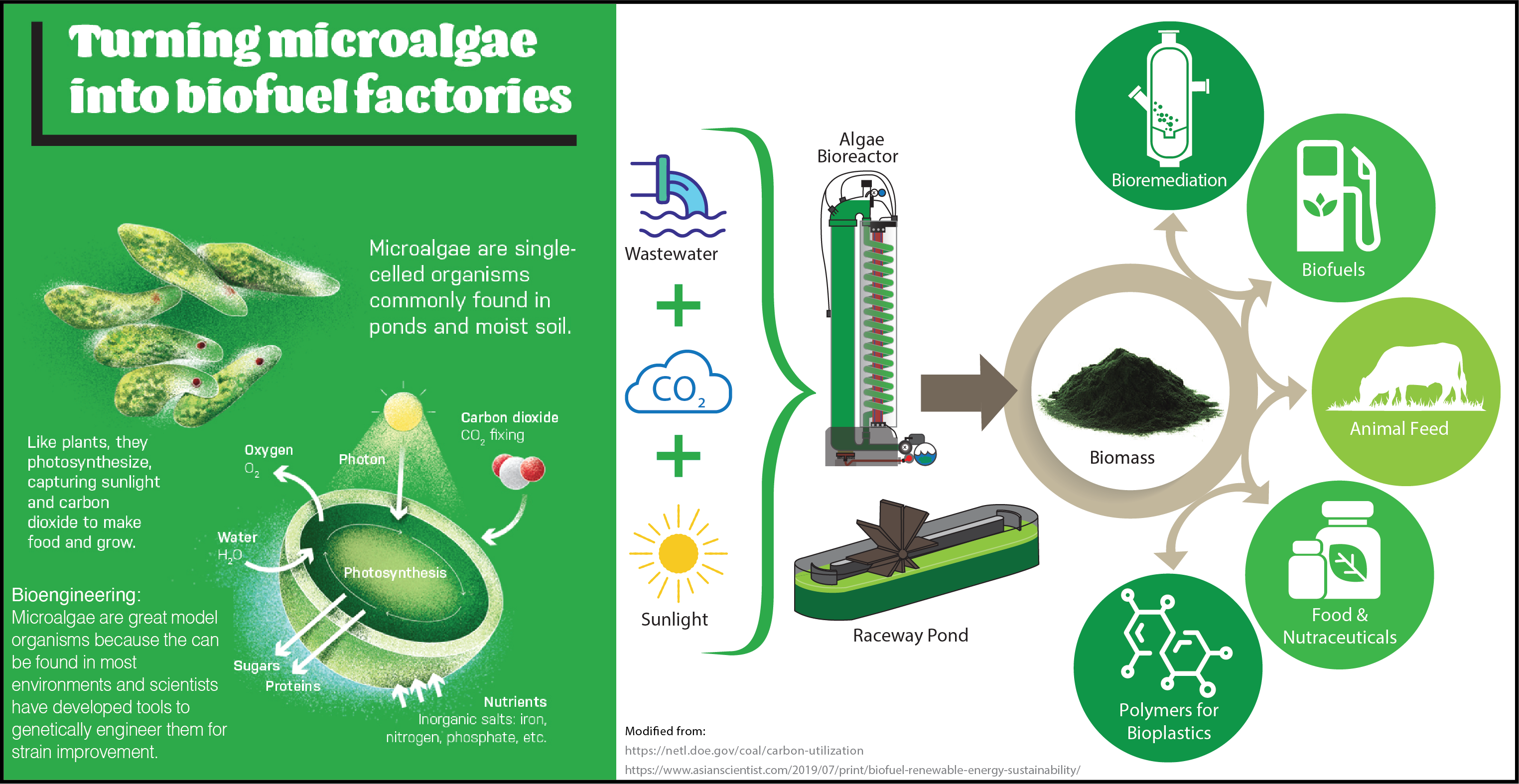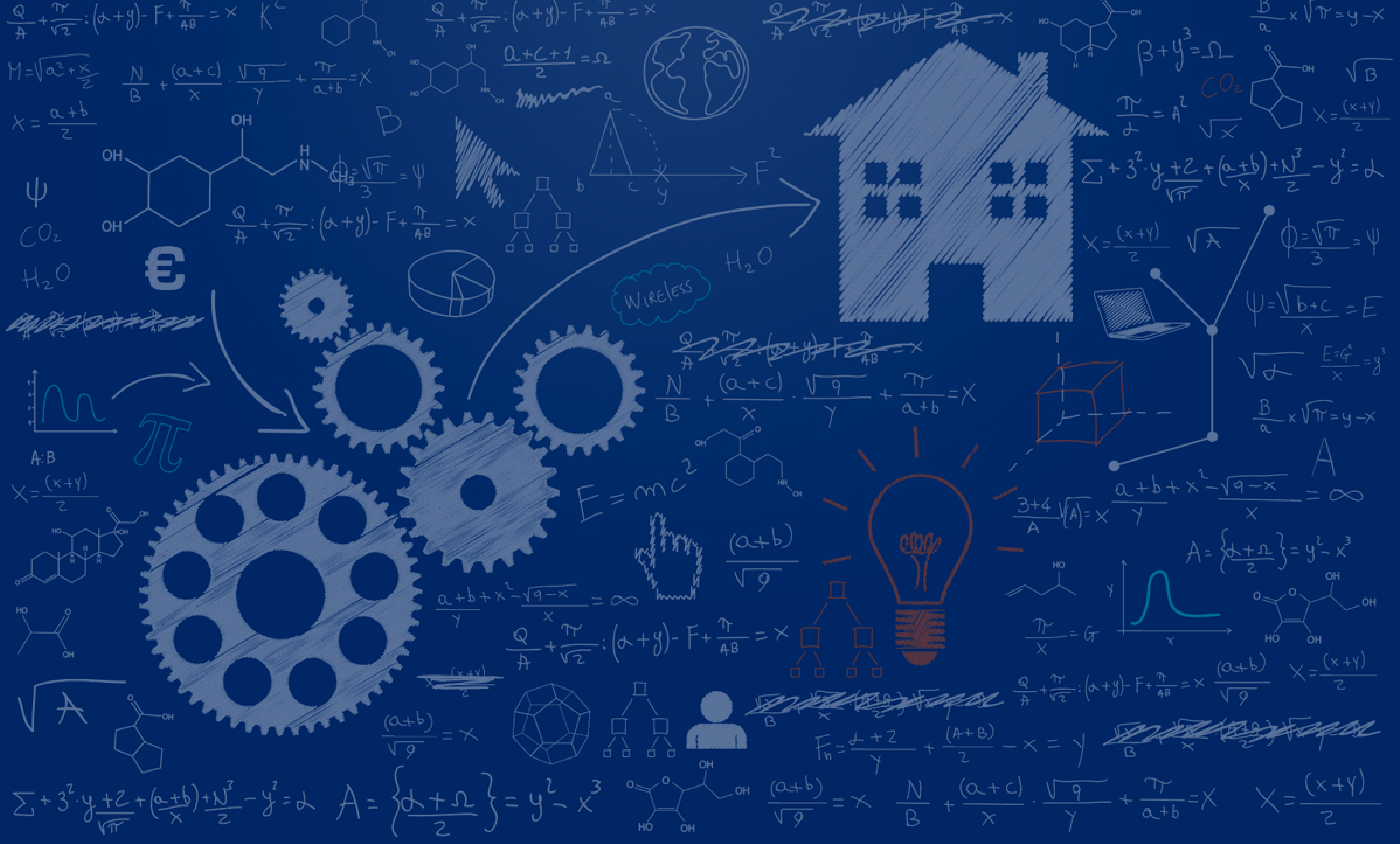Bioengineering A Sustainable World

Unit & Lesson Plans Flow Chart – TBA Printable Overview Contributors
This curriculum module is based on the environmental research of Dr. Jake Valenzuela of the Institute for Systems Biology, which focuses on using the green algae Chlamydomonas reinhardtii. These interdisciplinary STEM lessons were inspired by Dr. Valenzuela’s research, including growing the green algae in a variety of environments to increase the production of oils that could be used as biofuels. Additionally, Dr. Valenzuela has explored the many uses of algae and other photosynthetic organisms in consumer products on the market today and future possible applications.
THE NEED
To increase scientific literacy in the areas of systems thinking, sustainability, and biotechnology in order to prepare students to solve real-world issues, we need to:
- Teach students how to analyze problems by breaking the system down into its individual parts so they can understand how the system operates in the context of multiple inputs and outputs
- Develop students’ understanding & utilization of cross-disciplinary strategies to address the growing demands of complex problems.
OUR APPROACH
This curriculum module can be used by high school teachers to instruct students about advances in sustainable practices through the lens of green biotechnology. The module teaches students how microalgae can potentially supplement aspects of petroleum consumption with renewable sources of bio-energy and bio-products. Included are videos, case studies, and activities to teach students systems thinking at multiple scales, from global biogeochemical cycles to gene regulation.
BACKGROUND
Humans have been extracting petroleum and using it to fuel a variety of processes for over 2,000 years. In 2017, the United States alone consumed a total of 7.26 billion barrels of petroleum products. As the human population continues to grow exponentially, we continue to burn fossil fuel, releasing millennials’ worth of sequestered carbon as carbon dioxide and are rapidly changing the atmosphere of our planet. To explore ways to make common practices more sustainable, researchers are using photosynthetic organisms to create products that are carbon neutral. One example of a sustainable product is biofuel that can be created using photosynthetic microbes like the green algae Chlamydomonas reinhardtii. When grown under the right conditions, these algae will store oil in their cells that can be extracted and used as biofuel.
To address the larger problem of increasing carbon emissions, we need a systems approach to identify a solution. A combination of scientific research and educational exploration is needed to better understand the problem of carbon emissions and to find a variety of processes and products that are more sustainable. In this module, students learn about the multidisciplinary approach of bioengineering and how it can be applied to real-world scenarios. Students also learn about gene regulatory networks to understand the effects of the environment on gene expression and how this could lead to the creation of sustainable products. Through exploring current biotechnologies and research, students participate in inquiry-based activities and labs that support student understanding of gene expression in changing environments.
Many broader topics need to be considered when exploring the goal of sustainable practices and products. These include economic feasibility, scaling, environmental sustainability, and practicality. Using green algae as a model organism to show how living organisms can be bioengineered to help reduce carbon emissions provides a platform for discussions regarding cross-curricular concepts. Students will be performing labs closely aligned with current research at the Institute for Systems Biology (ISB) through the work of Dr. Jacob J. Valenzuela. Students will be working directly with the same species of algae used at ISB to test how the algae can bioremediate wastewater, sequester carbon, and how the algae’s phenotype changes with different environments.
CURRICULUM SUMMARY
In this module, students will begin by learning about systems biology and by researching a current events article regarding bioengineering and sustainability. Next, students go through a case study introducing them directly to current research at ISB as well as gene regulatory networks. Students will perform at least one lab using green algae as a model organism to aid in their investigation of how to mitigate human carbon emissions. Available labs include analyzing the effect of a change in environment on gene expression, measuring carbon sequestration by algae, and measuring the ability of algae to bioremediate wastewater. Finally, students will be able to construct a final project where they will pitch their own start-up biotech company with an idea of a product to help mitigate carbon emissions. Also included in the module are transcription and translation activities with a bioenergy theme and a more detailed study of gene regulatory networks.
 Please continue to explore this module to learn more. Also, for more information regarding sustainable practices, including current research, check out this scientific journal, which is an open-source journal that has a collection of studies related to biofuel. This graphic (which is also displayed to the right) shows a summary of what algae are, why they are a good model organism, and what they can be used to create. It also might be helpful to use either this factsheet put together by the International Union for the Conservation of Nature, or this factsheet put together by the U.S. Department of the Interior regarding carbon sequestration as a method of mitigating climate change. Finally, this website offers links to other factsheets, brochures, studies, and curricula all on the topic of biofuel and sustainable energy as well as this website from the U.S. Global Change Research Program that has resources and news updates.
Please continue to explore this module to learn more. Also, for more information regarding sustainable practices, including current research, check out this scientific journal, which is an open-source journal that has a collection of studies related to biofuel. This graphic (which is also displayed to the right) shows a summary of what algae are, why they are a good model organism, and what they can be used to create. It also might be helpful to use either this factsheet put together by the International Union for the Conservation of Nature, or this factsheet put together by the U.S. Department of the Interior regarding carbon sequestration as a method of mitigating climate change. Finally, this website offers links to other factsheets, brochures, studies, and curricula all on the topic of biofuel and sustainable energy as well as this website from the U.S. Global Change Research Program that has resources and news updates.
License
![]() Except where otherwise noted, the Bioengineering A Sustainable World module, copyright Institute for Systems Biology (ISB) through Baliga Systems Education Experiences, is available under a Creative Commons Attribution-NonCommercial 4.0 International License. All logos, trademarks, and videos are property of their respective owners. This resource may contain links to websites operated by third parties. These links are provided for your convenience only and do not constitute or imply any endorsement or monitoring by ISB or ISB’s funding agencies. Please confirm the license status of any third-party resources and understand their terms of use before reusing them.
Except where otherwise noted, the Bioengineering A Sustainable World module, copyright Institute for Systems Biology (ISB) through Baliga Systems Education Experiences, is available under a Creative Commons Attribution-NonCommercial 4.0 International License. All logos, trademarks, and videos are property of their respective owners. This resource may contain links to websites operated by third parties. These links are provided for your convenience only and do not constitute or imply any endorsement or monitoring by ISB or ISB’s funding agencies. Please confirm the license status of any third-party resources and understand their terms of use before reusing them.


